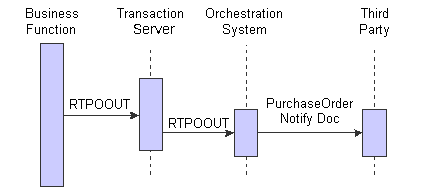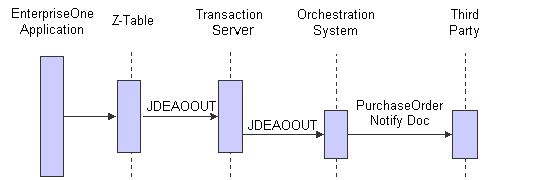JD Edwards EnterpriseOne as a Web Service Consumer - Notification
JD Edwards EnterpriseOne supports two methods for processing the web service consumer asynchronous notification pattern. The most frequently used method is to publish a real-time event using the transaction server.
This pattern uses these systems:
Enterprise server
Transaction server
Orchestration system
A business function performs a task that updates the JD Edwards EnterpriseOne database. The Call Object kernel notifies the transaction server. The transaction server retrieves the data and creates an event in the form of an XML document and places the event in JMS Queue or JMS Topic for the orchestration system to process. The orchestration system retrieves the XML document and sends it to the third-party system. The data mapping between the request and reply is provided by the cross-reference correlation utility in the orchestration system.
This diagram illustrates this model:

The other method uses Z-tables to send information to third-party systems.
This pattern uses these systems:
Enterprise server
Transaction server
Orchestration system
An update is made to a JD Edwards EnterpriseOne application. The application has processing options that load data into a specified Z-table. The system is then configured to publish the Z-table record using the transaction server.
This diagram illustrates this model:
